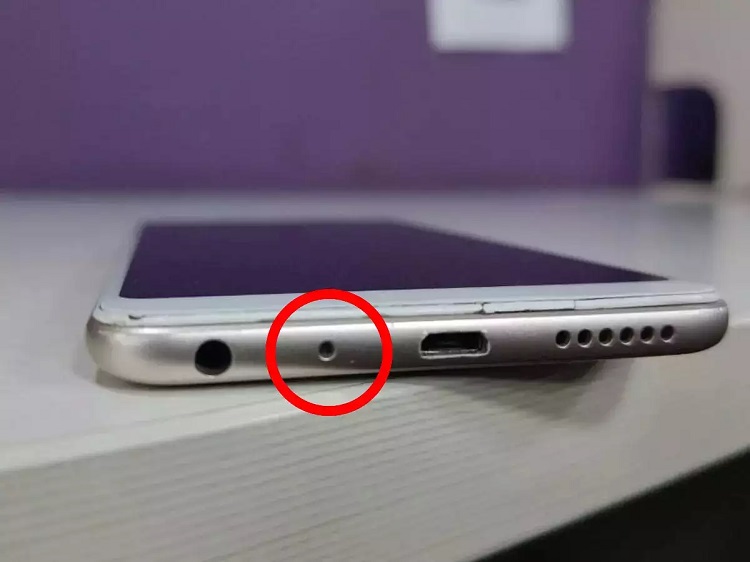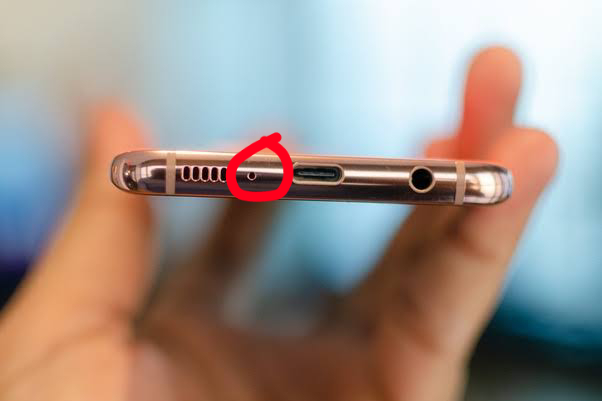If you’ve ever taken a close look at your smartphone, you’ve probably noticed a tiny, round hole somewhere along the top or back of the device. It’s easy to overlook, and most people have no idea what it’s for. Is it a reset button? Is it a hidden camera? Maybe it’s just part of the design? The truth is, the small round hole in your phone has a very important function, and it plays a critical role in ensuring your device works properly—especially when it comes to sound quality.
In this in-depth article, we’ll explore what this mysterious hole is, why it’s essential, how it improves your smartphone experience, and what to do if it gets blocked or damaged. Whether you’re a tech enthusiast or just a curious smartphone user, understanding this small component could change the way you view your phone forever.
What Is the Small Round Hole in Your Phone?
The small round hole on your smartphone is most often a microphone, but not just any microphone—it’s a noise-canceling or secondary microphone. This microphone is strategically placed to enhance the clarity of your calls, improve audio during video recording, and enable voice commands more accurately.
Key Function: Noise Cancellation Microphone
While your primary microphone is usually located at the bottom of your phone (near the charging port), the secondary microphone—found in that small hole—helps to cancel out background noise. This is especially important when you’re talking on the phone in noisy environments like city streets, public transport, or crowded rooms.

Why This Small Hole Is So Important
Let’s break down exactly why this tiny component is vital to your smartphone’s performance:
1. Improves Call Quality
One of the primary roles of the noise-canceling microphone is to enhance voice clarity during phone calls. It works in tandem with the primary microphone to isolate your voice from the background noise. The secondary mic picks up ambient sounds, which the phone’s software then subtracts from the overall audio. The result? The person on the other end hears you more clearly—even in noisy settings.
2. Better Video Audio Recording
When you record videos with your phone, this small microphone ensures that the audio captured is crisp and clear. It reduces wind noise, traffic sounds, and other environmental audio interferences, delivering a cleaner sound in your recordings.
3. Enhances Voice Assistants
Modern smartphones are equipped with AI-powered voice assistants like Siri, Google Assistant, and Bixby. For these tools to function effectively, your phone must clearly understand your voice commands. The noise-canceling microphone helps filter out background noise, allowing the assistant to pick up your voice with better accuracy.
4. Essential for Apps Using Voice
Any app that uses voice input—such as voice memos, translation tools, video conferencing apps, or dictation software—relies heavily on this microphone. If the small round hole is blocked or damaged, the app may struggle to interpret your voice correctly.
Location of the Small Microphone Hole
Depending on the brand and model of your smartphone, the location of this small round hole may vary. Here’s where you’ll typically find it:
- iPhones: Usually located at the top near the camera or along the rear side near the flash.
- Samsung Phones: Often found on the top edge of the device or near the back camera module.
- Google Pixel Phones: Frequently placed near the top bezel or alongside the primary camera.
- Other Android Devices: Varies greatly but often found on the top edge or back panel.
No matter where it is, this tiny opening is not just decoration—it’s essential hardware.
Common Myths About the Small Round Hole
Let’s address a few common misconceptions:
❌ Myth 1: It’s a Reset Button
Fact: Unlike older electronics, smartphones don’t typically have physical reset buttons. The hole is not meant to be pressed or poked.
❌ Myth 2: It’s an Extra Camera
Fact: While some phones have multiple camera lenses, this small round hole does not house a lens. It’s purely a microphone opening.
❌ Myth 3: It’s for Aesthetic Design
Fact: This is functional hardware, not just a design feature. Blocking it can cause real issues.
What Happens if the Small Round Hole Gets Blocked?
If dirt, dust, or debris enters the noise-canceling mic hole, your phone may start experiencing:
- Poor call quality
- Muffled audio in videos
- Difficulty with voice commands
- Failure in voice recording apps
Signs Your Noise-Canceling Microphone Is Blocked:
- People say they can’t hear you clearly during calls.
- Background noise dominates your voice in videos.
- Voice assistants don’t respond correctly.
- Recordings sound distorted or low-volume.
How to Clean the Small Microphone Hole Safely
If you suspect the small round hole on your phone is blocked, never insert a needle or sharp object into it. Instead, follow these safe cleaning tips:
- Use Compressed Air: Gently blow short bursts to dislodge debris.
- Soft Brush: Use a dry, soft-bristled toothbrush or antistatic brush.
- Avoid Liquids: Don’t use water or cleaning agents; they could damage internal components.

If the problem persists, it’s best to consult a certified technician.
The Technology Behind Noise Cancellation
So how does it actually work?
Active Noise Cancellation (ANC) in smartphones operates by:
- Capturing external sounds with the secondary mic.
- Generating inverse sound waves using software algorithms.
- Cancelling out the background noise in real-time.
This technology is similar to what’s used in noise-canceling headphones and can drastically improve how your phone handles sound.
Smartphones and Audio Evolution
The role of microphones in phones has evolved dramatically:
| Era | Microphone Technology |
|---|---|
| Early 2000s | Single mic, no noise filtering |
| 2010s | Dual mic setup introduced |
| Present Day | Triple mic arrays with AI sound processing |
Today, flagship smartphones use multiple microphones and AI algorithms to deliver professional-quality sound in a compact device.
Tips to Keep the Microphone Functioning Properly
To protect this small but essential component:
- Use a quality phone case with proper cutouts.
- Avoid water damage—this mic is not always waterproof.
- Keep it clean—inspect the hole regularly.
- Don’t insert pins or paper clips into the hole.
- Update your phone software, as improvements in audio processing are often delivered via updates.
Why You Should Care About This Small Detail
In today’s digital age, we rely on our smartphones for:
- Remote work calls
- Social media videos
- Audio messages
- Virtual assistant help
- Online meetings
All of these tasks require clear audio input. That small round hole ensures your voice is heard, your videos are understood, and your digital assistant responds correctly. It’s not just a hole—it’s the gateway to clear communication.
Final Thoughts
The small round hole in your phone might seem insignificant, but it plays a pivotal role in modern communication. From crystal-clear voice calls to flawless video audio, this tiny component supports some of the most important features of your device. It enables your phone to hear you clearly in a noisy world—and that’s a function worth understanding and protecting.
So next time you glance at your smartphone and notice that tiny hole, remember: big things often come in small packages.
